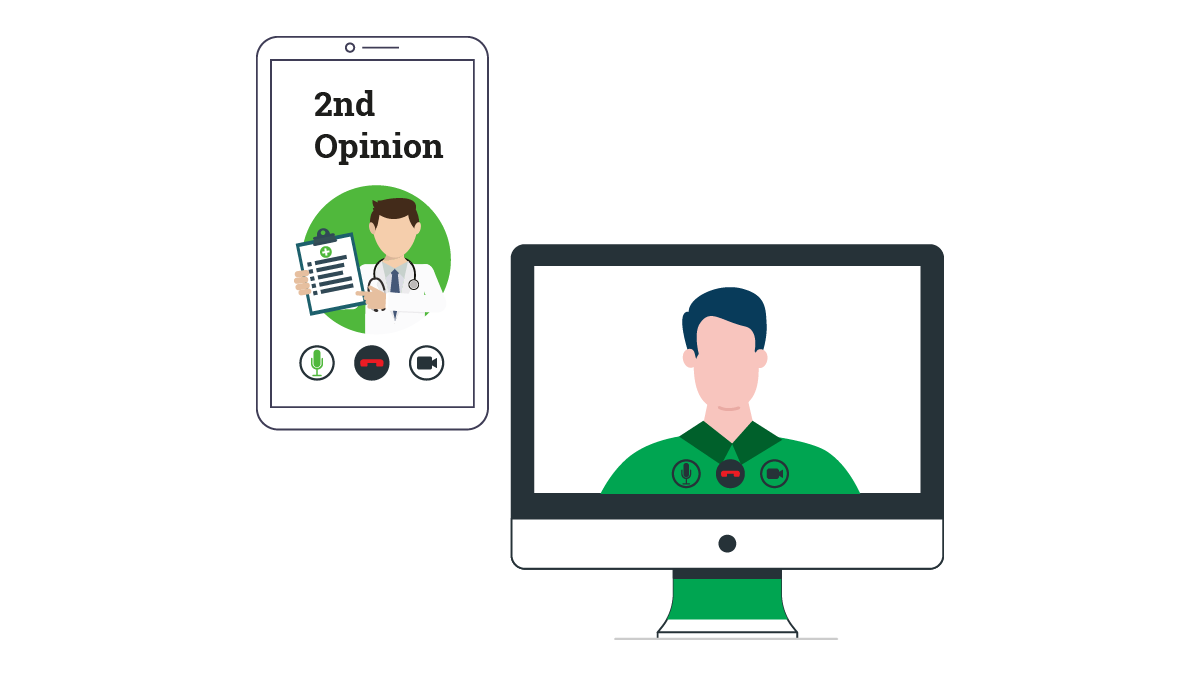Video Session Quality: The quality of the video session depends on the quality of the Internet
connection, web cam and audio facilities of both the patient and AIMS2Health’s doctors. It is the
responsibility of the patient team to ensure that the performance and quality of the equipment and
connection used, are optimal for doing video calls online. Video Consultations that fail on account of
poor equipment and connectivity will not be rescheduled for free and there shall be no refund of any
payment made by the patient team.
Video Session Privacy, Security & Etiquette: It is required that the patient prepares ahead of time to
participate in the Video Consultation, in a quiet and private place, where only the patient team is
present in the room where the video session is being held. For elderly or disabled patients who require
help to participate in the video, a caregiver may also be present. There must be no audio/video recording
of the video session by the patient. It is necessary that the patient (and any caregiver) act with proper
decorum in speech and action during the video consultation. Failure to comply with these requirements may
result in termination of the video session with no refund or rescheduling of the consultation.
Communication challenges:
- A remote video link alters how patients and doctors interact and may adversely affect the flow of
conversation.
- In a complex clinical case, doctors team may seem so preoccupied with finding the solution to the
clinical problem that it is sometimes easy to forget that the patient team might be overwhelmed by
anxiety, frustration and negative emotions, and require re-assurance to feel safe, at ease and trust in
the doctors team.
Lighting—ensure the room is well lit. Cameras need more light than the human eye to produce a quality image. Use
a broad light source with daylight, as this lessens shadows and reduces contrast. Position yourself towards the
source of light, e.g., if the window is the source of light, look towards it when looking into the camera. Avoid a
high intensity light behind you as this darkens the image and the doctor may not be able to see you clearly.
Appearance—check your appearance on the screen. Is the camera at the right distance from you so that the doctor
can see you or the relevant body part for examination, and not just your face?
Assistance—consider asking a family member or a carer to join you. This may be the patient’s spouse, parent or
friend who can help support the patient during the consultation. They may also have their own questions or
concerns about the condition, which should be addressed. The inclusion of a partner or carer is essential,
especially in a “bad news” conversation. Two pairs of ears are better than one, especially when the information
being received is negative, unexpected and/or difficult to understand. In such situations, it can be hard for the
patient to take in. For such conversations, find out when the family member is available to be party to the
conversation. They could help by taking notes of key actions or hold the smartphone during the examination. If the
doctor will not be able to see the person who may be with you, let the doctor know they are present so that they
could be involved in the consultation, if appropriate. Consider the role of the patient’s partner or carer during
the consultation.
Technical check—go to AIMS2Health website, check you have got a compatible browser, do a speed test to see you
have the appropriate download and upload rate.
Appointment Time—Check your appointment time, be on time and preferably be online a few minutes early.
Online Waiting Room—The doctors team may be delayed for unavoidable reasons; you may have to be in an online
waiting room for a short while.
Examination—Depending on the reason for the consultation (e.g., a rash or swelling), consider wearing clothing
that would enable the doctor to examine you by video.
Measurements—if you have home devices such as a thermometer, oximeter, blood pressure or blood glucose
measurement monitor, do the measurements as needed before the consultation.
Questions and notes—consider making a written list of concerns and queries before the consultation and record any
important information about medical history such as allergies.
Medication(s)—prepare the list of current medication(s) you are taking.
Smartphone functions and features—familiarise yourself with the settings, functions, and features of your phone
video consultation app, including the mute button or the video on/off button.
- During the video consultation
Introduction—introduce yourself, and inform the doctor at the start of the consultation of who else is with you
if they are out of view.
Audio and video—check the doctor can see and hear you clearly; otherwise a telephone consultation may be more
appropriate.
Notes—make notes of key points and actions.
Questions—do ask questions and share any your ideas, concerns, needs and expectations you may have as you would
in a face-to-face consultation.
Guidance—Ask the doctor where and what to read anything on the internet or on the AIMS2Health website about their
condition, and to suggest ways in which access to additional information and support, including sign-posting to
counselling, support services and patient support groups can be obtained.
- Common video interactional challenges
Many different challenging interactions occur daily. These challenging interactions may arise due to
discrepancies in expectation, perception and/or communication between the patient and doctor, and could be
caused by the doctor, by the patient or by both.
- Other challenges include:
opening the video consultation
dealing with disruption to conversational flow (e.g., technical issues with audio and/or video), and
conducting an examination.
